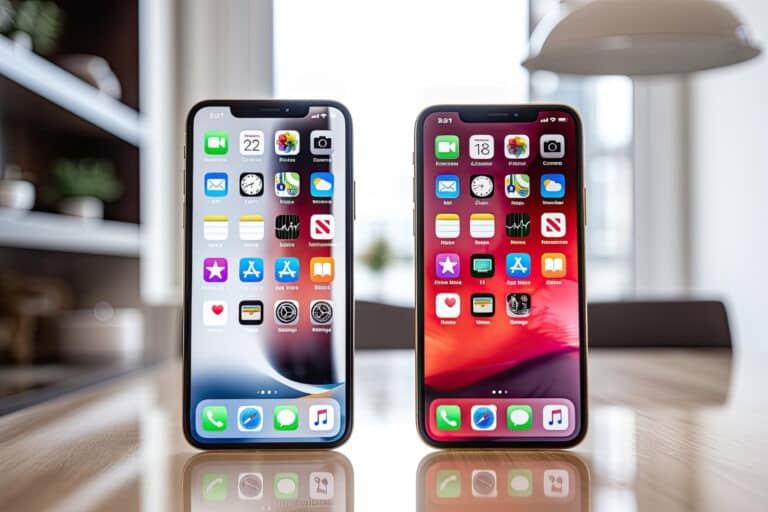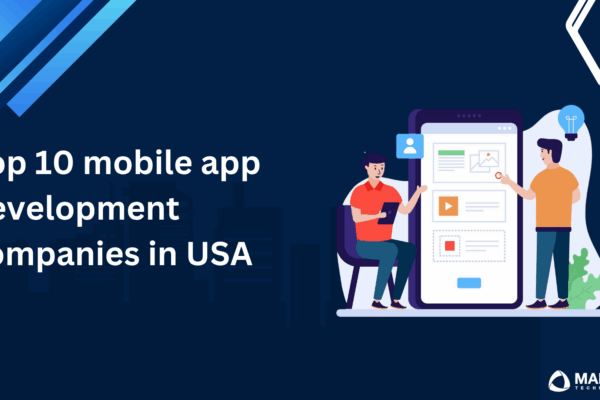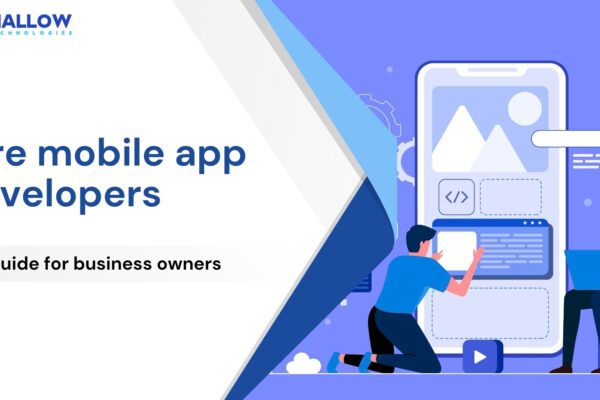Are you in the midst of planning your new iOS application and finding yourself overwhelmed by the research and details involved? Building an iOS application can be a daunting task when you’re unsure of where to start or what needs to be defined before diving into development. It’s easy to feel lost in the complexity of it all, but fret not. You’re not alone, and you’ve come to the perfect place to get all your questions answered.
As a custom software development company, we at Mallow possess a wealth of expertise in delivering software solutions and mobile applications across various industries. With more than over a decade of experience in providing reliable solutions, our track record has always been the reason behind our clients returning to us for more. From our experience, we’ve gained valuable insights and have provided guidance to aspiring app creators, helping them navigate the complex journey of iOS app development effectively.
After going through this article, you will discover a comprehensive roadmap that covers everything from conceptualising an application, choosing the right development approach, and navigating technical challenges to effectively marketing and maintaining the iOS application. With a deep understanding of the pain points and common pitfalls accompanying iOS application development, you will be better equipped to make informed decisions, avoid costly mistakes, and ultimately transform innovative ideas into successful and thriving apps on the App Store.
Steps to consider when building your iOS mobile application from scratch
Following a well-defined step-by-step procedure to develop your iOS application is paramount for several reasons. It provides structure and clarity to what can otherwise be a complex and overwhelming process. Breaking down the development journey into manageable steps makes it easier to prioritise tasks, set milestones, and track progress. This approach minimises the risk of overlooking essential elements, such as the design, development, and deployment of your application.
Step 1 – Define your business idea
Evolving your idea is a critical step in the process of building an iOS mobile application. Clearly define the problem that your application will address. Consider real-world pain points or gaps in existing solutions.

Define their characteristics, needs, and preferences. Determine what sets your business idea apart from competitors out there (if any). Identify the unique features, unique selling points or benefits your app will offer. Identify the problems your app can solve or the improvements it can offer.
Evaluate the technical feasibility of your app idea. Consider the availability of required resources and technologies.
Step 2 – Conduct market research and validate your idea

- Market research is a crucial step in building your iOS application as it helps you gain a deep understanding of your target audience, competitors, and the overall market landscape. Clearly state the goals of your market research. What specific information are you looking to gather? What are your research objectives? Determine your potential users. Define their demographics, interests, and behaviours.
- Conduct surveys, interviews, or focus groups with potential users to gather feedback.Consider creating detailed user personas representing different segments of your target audience.
- Understand how to market and monetise the apps. Estimate the size of your target market and its growth trends. Look for statistics and reports related to your app’s niche or industry.
- Determine the best approach to enter the market. Are there specific niches or segments to target? Analyse potential barriers to entry, such as regulatory or competitive challenges.
- Create a business model canvas to visualise key aspects of your app idea, such as value proposition, customer segments, and revenue streams.
- Create a prototype or Minimum Viable Product (MVP) to test your idea’s viability. It is vital because it allows you to launch a functional but lean version of your software quickly, enabling early user feedback and validation of your concept. It helps in reducing development costs, minimising risks, and accelerating time-to-market while ensuring that your product aligns with actual user needs and market demand.
Step 3 – Decide your application features
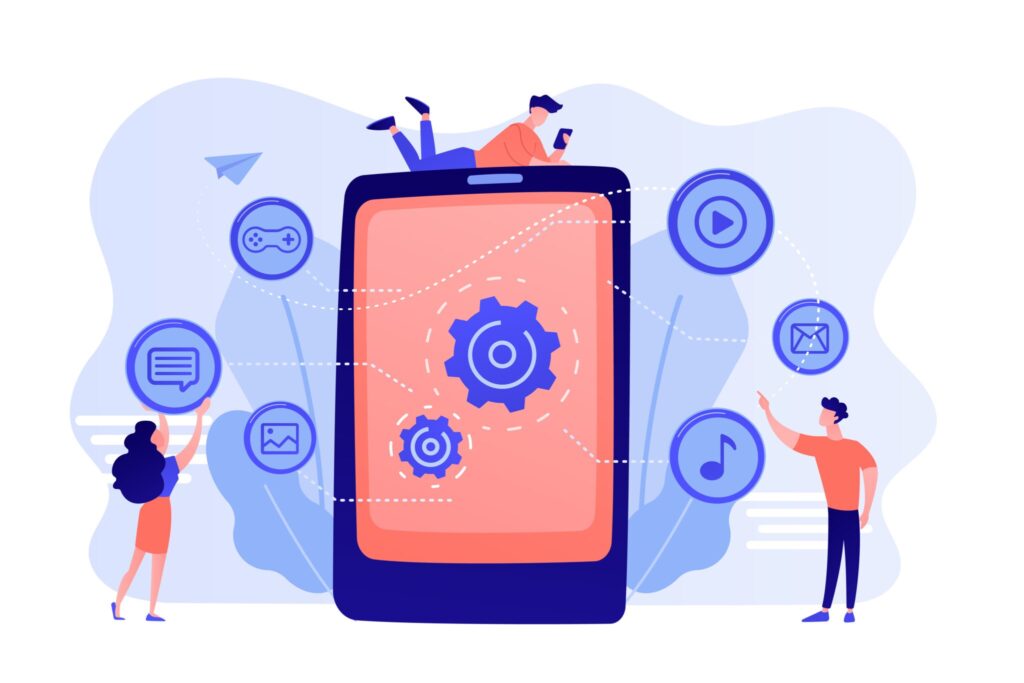
As you are done with conducting thorough market research to understand your target audience’s needs and preferences, you need to create a feature list, prioritising essential functions while keeping user experience in mind. Consider what will make your app stand out from competitors. Document these features and their user stories to guide development.
Here’s a checklist to help you define and prioritise the features of your application:
✅ Clearly identify the problem or need your app will address. Understand the pain points of your target audience.
✅ List the essential features that directly address the identified problem.
✅ Prioritise those unique and essential features, as they will form the foundation of your app.
✅ Categorise features into must-have, nice-to-have, and future enhancements. Focus on must-have features for the initial version (MVP).
✅ Consider including inputs received from end-user feedback and surveys so that you can get an overview of what your application users would be expecting during their journey in your application.
✅ Don’t forget to include the monetising or analytics tool to analyse and understand how your application users are using your application.
✅ Create a roadmap for future feature enhancements and updates. Plan for ongoing development beyond the initial release.
✅ Review the important app store guidelines that your platform would have legal and compliance requirements, such as data privacy and accessibility. Ensure that your app complies with relevant regulations.
✅ As you are done with finalising the features, create a user flow diagram to visualise how users will navigate through the app.
Step 4 – Decide the mode of developing your application
Developing an iOS mobile app in-house
Your team should consist of skilled professionals with expertise in iOS app development, including Swift, UI/UX design, quality assurance, and project management. Developing an iOS application using in-house expertise can provide you with more control over the development process. If your organisation has a team of skilled iOS developers, this approach can be cost-effective in the long run.
Your in-house team is familiar with your company’s specific requirements and can ensure seamless integration of the app with your existing systems and workflows. However, it’s essential to consider whether your team has the necessary skills, resources, and bandwidth for the project. You may need to invest in training or hiring additional talent if your current team lacks the required expertise.
The in-house approach allows for real-time communication, quick decision-making, and more immediate issue resolution, which can be advantageous for complex or dynamic projects. Keep in mind that while in-house development offers control and customisation, it may also require significant time and resource allocation, affecting your overall workload.
Outsourcing the development of your iOS mobile app
Outsourcing iOS app development to a specialised agency or development team can be a practical choice when you lack in-house expertise or want to focus on your core business functions. External experts bring extensive experience and knowledge, often resulting in faster project completion. Outsourcing can provide you with access to a broader skill set, including designers, quality assurance professionals, and project managers, who can contribute to the project’s success.
However, working with an external team means relinquishing some control over the development process. Effective communication and project management become even more critical to ensure that the outsourcing team fully understands your requirements and aligns with your goals. You should carefully select a reliable outsourcing partner, consider their portfolio, and establish clear expectations through well-defined project scopes and contracts. This approach can streamline development but requires active engagement and collaboration to ensure a successful iOS application.
It’s also essential to ensure that the outsourcing company follows a well-defined and transparent process for managing and executing projects. Their ability to provide clear documentation, regular progress updates, and transparent communication can significantly impact the success of your iOS app development. A trustworthy partner will keep you informed at every stage, making the outsourcing experience more reliable and ensuring that your project is on track to meet your goals and timelines.
Step 5 – Define the right project management model

Here’s a list of factors to consider when choosing the appropriate project management model:
- Project Scope and Complexity – Assess the scope and complexity of your application. Complex projects might benefit from methodologies like Agile, while simpler ones may be suitable for Waterfall.
- Project Goals and Objectives – Clearly define your project’s goals, objectives, and key performance indicators (KPIs). Your chosen methodology should align with these goals.
- Budget and Resources – Evaluate the budget and resources available for your project. Some methodologies require more extensive resources and ongoing costs than others.
- Timeline and Deadlines – Consider your project’s timeline and delivery deadlines. Agile and Scrum, for instance, allow for more flexibility in adapting to changing timelines.
- Team Expertise – Evaluate your team’s expertise and experience with specific project management methodologies. Choosing one that aligns with your team’s strengths can be beneficial.
- Version Control – Developers use version control systems like Git to manage and track changes to the codebase, ensuring collaboration and code stability.
- Adaptability to the changes – Consider how adaptable your organisation is to change. Agile methodologies, for instance, are well-suited for organisations that can embrace frequent iterations and changes.
- Scalability and Flexibility – Consider whether your chosen methodology can scale to meet the evolving needs of your application and business.
- Continuous Improvement – Determine if your project management model supports continuous improvement and learning from each development cycle.
Check out this article on Agile Vs Waterfall, to get more insights on which project management model will be the right fit for your application development.
Step 6 – Design and Wireframing

Design and wireframing are essential steps in the iOS app development process, helping you plan the visual and structural aspects of your app. Begin by defining the overall look and feel you want for your app. Consider the style, colour scheme, and branding elements. Create a design mood board or style guide to establish a consistent visual identity. Start with low-fidelity wireframes, which are simple sketches that outline the layout and basic structure of each screen.
Use wireframing tools like Balsamiq, Sketch, Adobe XD, or even pen and paper to create these initial wireframes. Develop a storyboard that maps out the user’s journey through the app. This helps visualise the flow and interactions. Identify key user actions and the transitions between screens. Organise the content and features logically. Consider how users will navigate through your app.
Create a sitemap that illustrates the hierarchy of screens and content. Once you’re satisfied with the wireframes and flow, move on to high-fidelity design. Create detailed, pixel-perfect mockups of each screen. Pay close attention to typography, spacing, and alignment. Use design tools like Adobe Photoshop, Sketch, Figma, or Adobe XD to create high-fidelity designs.
Gather feedback from potential users or stakeholders on your designs and prototypes. Consider conducting usability testing to identify any issues with navigation or user interactions. Familiarise yourself with Apple’s Human Interface Guidelines (HIG) for iOS app design. Ensure that your app’s design follows these guidelines for consistency with the iOS platform.
Step 7 – Develop your application
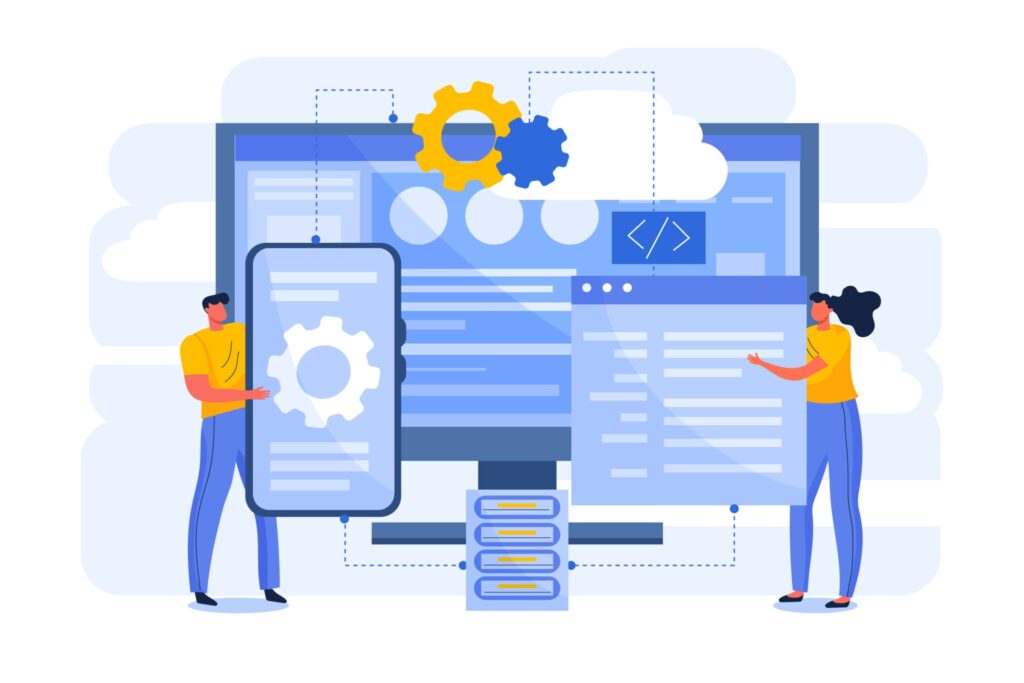
Below you’ll find a list of tasks that anyone would need to do in the development phase:
- Coding and Programming – This phase primarily involves writing the code that makes your mobile application work. You can use Swift (for iOS), or cross-platform frameworks like React Native, Flutter, or Xamarin to build the application.
- User Interface (UI) and User Experience (UX) implementation – The visual and interactive elements of the application are designed based the design guidelines. This includes screens, navigation, assets export etc. Based on the design finalised the same will be implemented in the development phase as well. Given that this is an iOS mobile application and users are more likely to be operating it on mobile devices, having an exceptionally intuitive and mobile-centric design is imperative.
- Back-End Development (if required): If your application demands server-side functionality, such as user authentication, database management, and data processing, back-end technologies like Node.js, Ruby on Rails, Python, or PHP etc, will be implemented. The back end is responsible for handling requests, managing data, and ensuring the application’s functionality.
- API Integration – To enable communication between the mobile side and back end, application programming interfaces (APIs) are integrated. If required, you can try including third party service (e.g., payment gateways, social media integration) and custom APIs developed for your application.
- Database or local storage set up – Data storage and management are crucial aspects of mobile app development. If you want your application to work in offline as well then consider local storage implementation of your application as well.
- Developer’s testing and debugging – Throughout the development phase, rigorous testing and debugging are essential to identify and fix issues, ensuring the application functions smoothly. This includes unit testing, integration testing, and user acceptance testing.
- Performance Optimisation – Developers work on optimising the application’s performance, including improving loading times, reducing latency, and minimising resource usage. This is critical for delivering a responsive and intuitive user experience.
- Security Measures – Security features, such as data encryption, secure authentication methods, and protection against common vulnerabilities, are integrated to safeguard user data and the application from potential threats.
- Iterative Development – Many mobile app projects follow an iterative approach, meaning that development occurs in cycles or sprints, allowing for regular testing, feedback, and refinements.
Step 8 – Ensure quality assurance
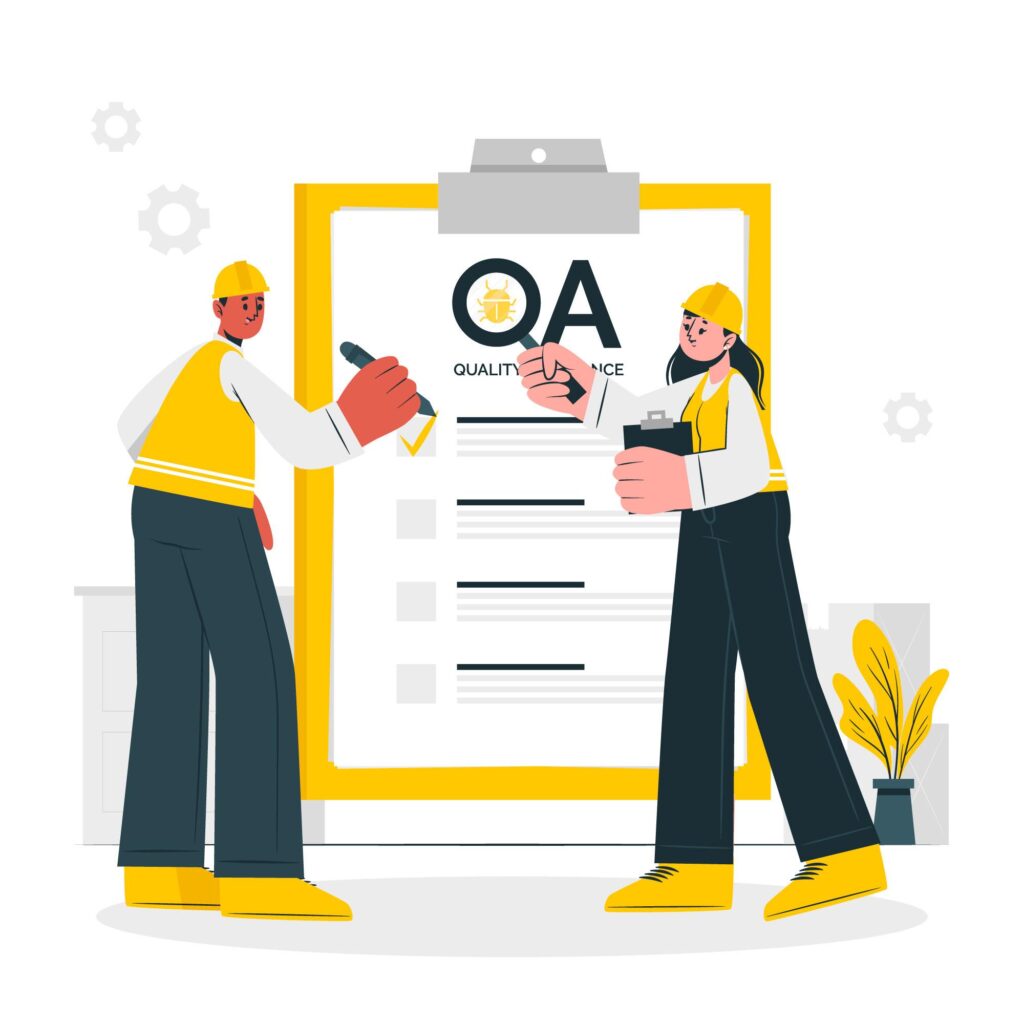
Prioritise quality assurance and testing throughout the development process. Conduct functional testing, usability testing, and performance testing to identify and resolve issues. Ensure that your app is bug-free, responsive, and user-friendly.
There are some key areas that you should consider when evaluating quality assurance.
- Test Plan Development: Create a comprehensive test plan that outlines testing objectives, scope, and methodologies. This plan should cover all aspects of the app, including functionality, usability, performance, and security.
- Unit Testing: Conduct unit testing to evaluate individual components or modules of the app for correctness and functionality. This ensures that each part of the app works as intended.
- Integration Testing: Test the interaction between different components or modules of the app to identify any issues related to data flow, communication, or compatibility.
- Functional Testing: Verify that all features and functionalities work as expected. Test each feature thoroughly to catch bugs, errors, or unexpected behaviour.
- Usability Testing: Evaluate the app’s user interface and user experience (UI/UX) to ensure it’s intuitive, user-friendly, and visually appealing. Gather feedback from potential end users to make necessary improvements.
- Performance Testing – Measure the app’s performance under various conditions, such as different network speeds, device types, and loads. Identify and address performance bottlenecks and optimise resource usage.
- Security Testing – Assess the app’s security to identify vulnerabilities, data breaches, or potential threats. Implement security measures to protect user data and app integrity.
- Compatibility Testing – Test the app on various iOS devices, screen sizes, and iOS versions to ensure it functions correctly on a wide range of configurations.
- Regression Testing – Re-run previous tests after making updates or fixes to ensure that new changes don’t introduce new issues or negatively impact existing functionality.
- Accessibility Testing – Ensure your app complies with accessibility standards, making it usable for individuals with disabilities. Test screen readers, voice commands, and other assistive technologies.
- Load and Stress Testing – Assess how the app performs under heavy loads and stressful conditions. This is crucial to identify server capacity and scalability requirements.
- User Acceptance Testing (UAT) – During UAT, the application is thoroughly tested by organisation users or stakeholders who represent the intended audience. The primary objective of UAT is to ensure that the app functions as expected and meets the users’ requirements and expectations. This phase allows for the identification of any issues, usability problems, or discrepancies between the application and the users’ needs.
- Beta Testing – Beta testing is a crucial step in the iOS application development process, where a limited number of external users are invited to test the application before its public release. These beta testers can be early adopters, volunteers, or a selected group of potential users. Beta testers provide valuable insights into the app’s usability, performance, and functionality. Their feedback can help identify and address bugs, usability problems, and feature improvements.
- Documentation and Reporting – Keep detailed records of test results, issues found, and actions taken. Provide clear documentation for the development team to address and resolve identified problems.
Check out this article on some of the quality testing methods that you can use to make sure your application remains high quality.
Step 9 – Deploy your iOS application.
Finally, prepare your iOS app for deployment to the App Store. Create all necessary assets, including app icons, screenshots, and marketing materials. Follow Apple’s guidelines for app submission, including privacy policy requirements. Test your app on various devices and iOS versions to ensure compatibility. Once approved, launch your app to the App Store and start marketing it to your target audience.
Pre-Deployment Checklist.
✅ Ensure you have a valid Apple Developer account. Set up your App Store Connect account to manage your app’s submission.
✅ Prepare essential app details, including the app name, description, keywords, and category. Create an attractive app icon and promotional screenshots following Apple’s guidelines.
✅ Have a privacy policy in place that complies with data protection laws and Apple’s requirements. Include a link to your privacy policy within your app’s App Store listing.
✅ Decide on the initial version number for your app. Generate a unique build number for your app, which you’ll use for version tracking.
✅ Thoroughly test your app on different devices and iOS versions to ensure it functions correctly. Identify and fix any bugs or issues.
Submission Checklist
✅ Review Apple’s App Store Review Guidelines to ensure your app complies with their rules.
✅ Make any necessary adjustments to meet the guidelines.
✅ Create high-quality screenshots showcasing your app’s features.
✅ Consider creating a preview video to demonstrate your app’s functionality.
✅ Determine your app’s pricing model (free, paid, freemium, subscription, etc.).
✅ Set the price if applicable and define any in-app purchase offerings.
✅ Optimise your app’s title, keywords, and description for better discoverability.
✅ Choose relevant and high-impact keywords to improve search rankings.
✅ Localise your app’s metadata, including the app name and description, for different regions.
✅ Ensure your app’s content is culturally sensitive and appropriate for the target audience
Post-Deployment Checklist
✅ Continuously monitor your app’s performance on the App Store. Adjust keywords and metadata as needed based on user engagement and feedback.
✅ Encourage user reviews and ratings on the App Store. Respond promptly to user feedback and address issues as they arise.
✅ Plan and release regular updates to enhance your app’s features and address bugs. Keep your app compatible with the latest iOS versions.
✅ Implement a marketing strategy to promote your app through various channels, such as social media, email marketing, and press releases. Consider running paid ad campaigns to increase visibility.
✅ Monitor app analytics tools like Google Analytics to track user behaviour, engagement, and conversion rates to improve your app’s performance and user experience.
Step 10 – Support and Maintenance
Support and maintenance are essential in the application development process to ensure continued functionality, security, and user satisfaction. Below are the tasks that you will undergo:
- User Support – Provide timely and effective support to address user queries, complaints, and issues. A responsive customer support system is crucial for maintaining user satisfaction.
- User Feedback Integration – Consider user feedback and reviews to identify areas for improvement, gather feature requests, and prioritise updates accordingly.
- Compatibility Updates – Keep the app up-to-date with the latest iOS releases and ensure that it functions correctly on new devices with varying screen sizes and resolutions.
- Security Updates – Implement security patches and updates to protect user data and ensure the app is safe from potential vulnerabilities.
- Performance Optimisation – Periodically review and optimise the app’s performance to ensure it runs smoothly, loads quickly, and uses resources efficiently.
- Regular Testing and Bug Fixing – Continuously test the application for bugs, glitches, and compatibility issues on various iOS devices and versions. Address and fix any reported issues promptly.
- Feature Enhancements – Plan and implement feature enhancements or additions to keep the app competitive and meet evolving user needs.
- A/B Testing – Experiment with different features or user interface changes using A/B testing to understand what works best for your audience.
How do application development companies determine the cost they charge?
By now, you have a comprehensive understanding of the journey it takes to bring your dream application from conceptualisation to its launch in the app store. As you delve into the intricacies of each development stage, one of the most critical aspects that comes into focus is the “cost of building the application.” This is a pivotal consideration, and understanding how different application development companies determine their pricing and the factors influencing these costs is vital.
Understanding the cost of building custom software is essential for anyone embarking on a software development project. First and foremost, it allows for effective budget planning. By estimating the costs involved, businesses can allocate resources wisely and avoid financial surprises along the way. Moreover, knowing the expenses helps in setting realistic expectations and defining project scope. It enables stakeholders to make informed decisions regarding the features and functionalities to be included, ensuring that the final product aligns with their needs and resources.
Cost estimation also plays a critical role in risk assessment, as it helps identify potential financial bottlenecks or overruns, allowing for mitigation strategies to be put in place. Check out this article on how much it would cost you to build a custom software in 2023 for more insights.
Still unsure about your next step? Feel free to reach out to our team.

